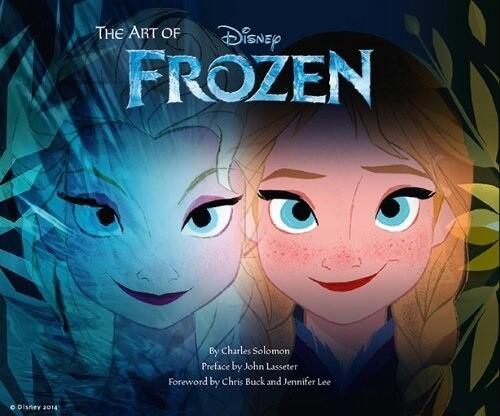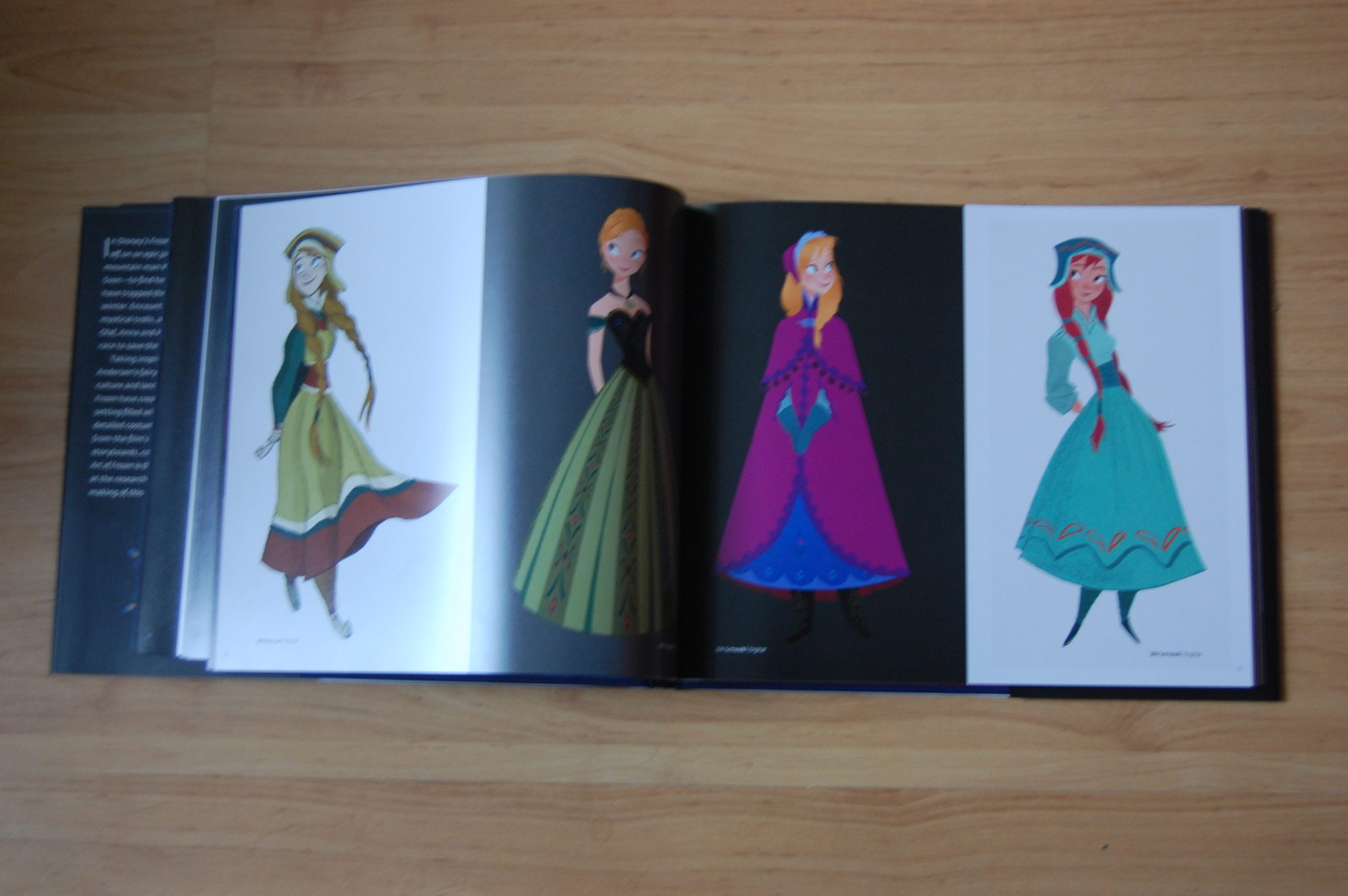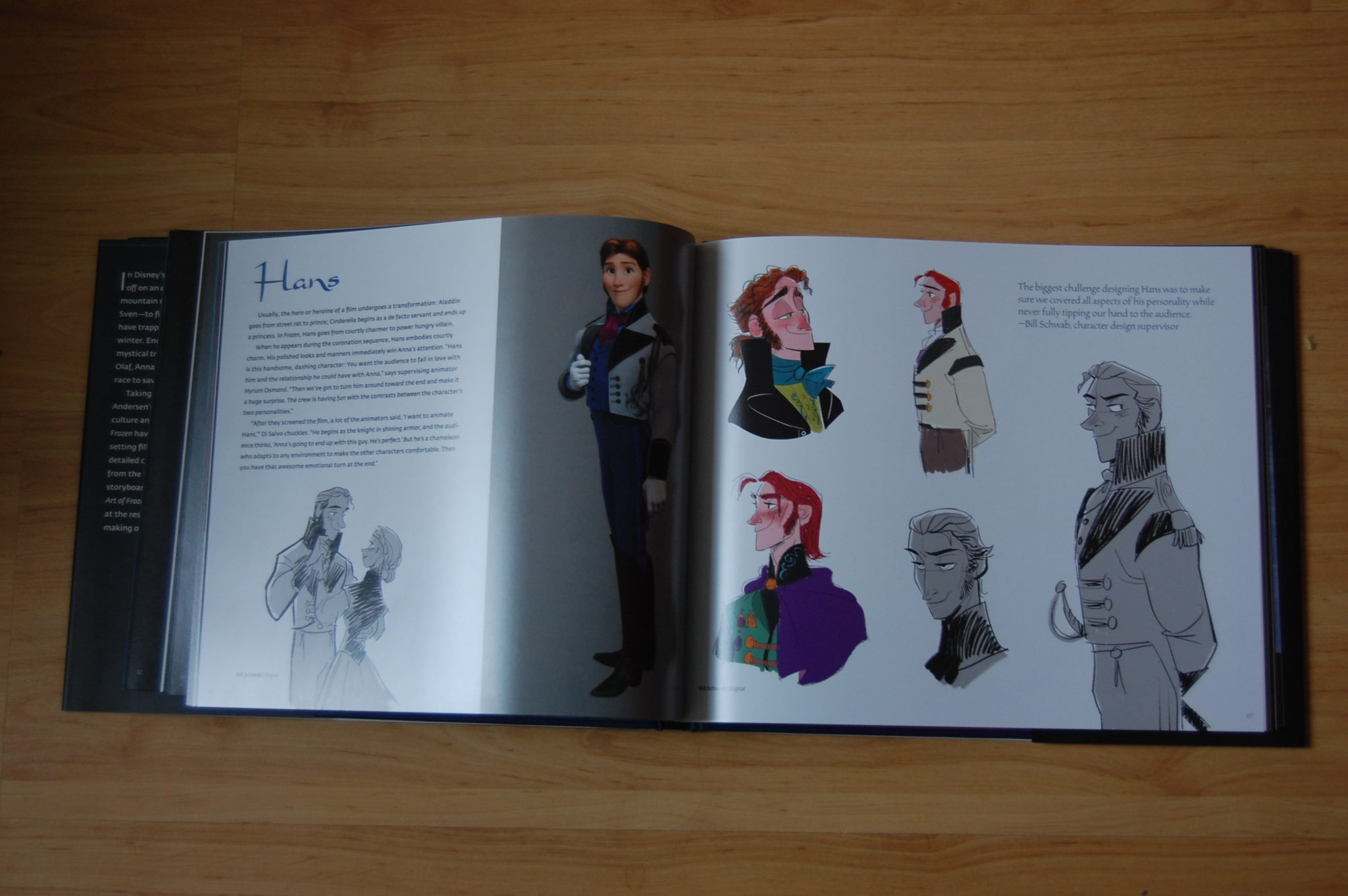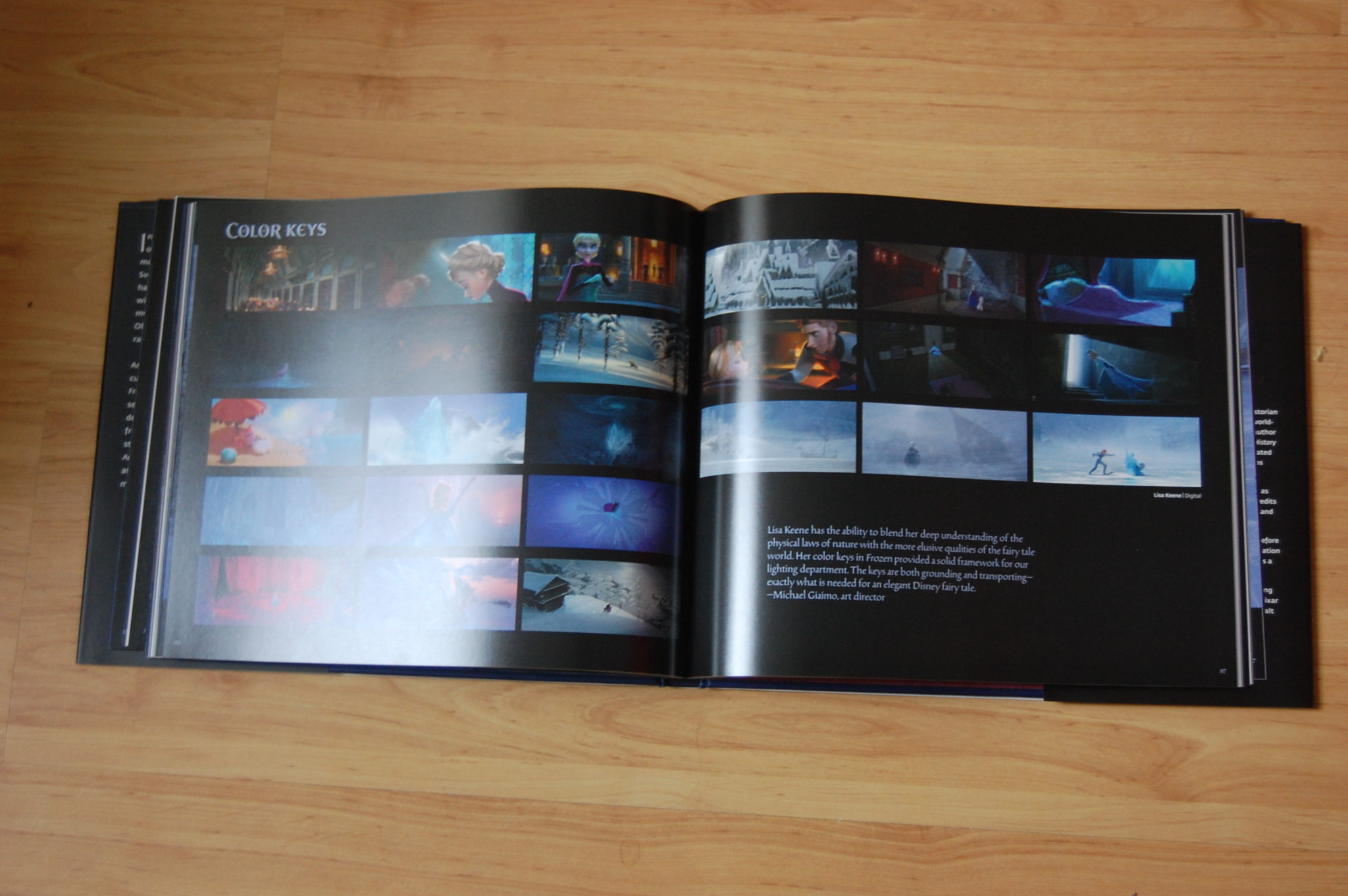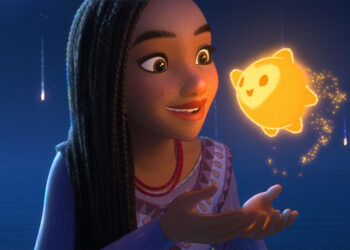I collect animation art books and every time a new book is released, I’m excited to see just what the makers of the book and film ultimately included. Just concept art? Storyboards? Character maquettes? Or perhaps something completely new?
Well with The Art of Frozen, I had this same anticipation because its cover art was something new and refreshing with the side-by-side comparison of the two sisters’ faces. I was excited to see what sort of art the author Charles Solomon would include and, after having read it, I can say the he did a wonderful job.
This first type of art you’ll see immediately when you open the book is storyboards. A storyboard is like a comic-book panel of a specific scene. The prologue and introduction pages contain a lot of storyboards from different scenes in Frozen and I love the fact that these were included because, in most art books, storyboards are rarely included. This was a great use of the space since the prologue and introduction pages are usually very text heavy with notes from the directors and such, so this was a nice way to include storyboards without having them feel out of place.
Unlike most art books, which show us the character designs first, this book takes us sequence by sequence throughout the film. When a character is introduced in a scene, then that’s when we see that character’s concept and development art. The first chapter after the introduction and prologue pages is called Coronation and includes art from the Elsa’s coronation and the first act of the film. So here we are introduced to the sets and locations, while also seeing a more in-depth look at Anna, Elsa and Hans.
Solomon did a great job selecting art for this book: all the pages have a different art styles and different designs. So we don’t just see the final character design in different poses, which is common in other art books. The Art of Frozen also used space wisely; sometimes tons of art was packed onto a page and other times it was more spaced out and filled with just a few character designs.
The section called Costume Design was particularly interesting since the film Frozen contained some of the most complex costumes ever found in a Disney animated film. These pages contain art from cloak studies, fabric and pattern studies, and a lot more. One complaint I had about these pages was that it reused art from other sections; it seems like a missed opportunity since I’m positive there was so much concept art that didn’t end up making it into the final version of the book. This chapter mainly focusses on Anna, Elsa, Hans, the Duke, the coronation and Arendelle in summer.
The second chapter is called Wilderness and basically follows part of the film’s second act in the forest. We first see a development study of trees, which includes art of different kind of trees and how snow looks on them, and then see art of Anna journeying through the forest to find Elsa. I enjoyed these landscape pages as they helped to break up the character designs pages.
The first character in this chapter is Oaken, the owner of Wandering Oaken’s Trading Post and Sauna. Unfortunately there are only two concept art pieces of Oaken (both final designs) and a few concept arts of his shop. In this chapter, you’ll also find the a brief look at the color script. Well it’s not really a color script because there are just a few color keys on the two pages. Unlike other art books, we don’t get pages devoted to the color keys of the entire film; however, I’m glad they at least included these color keys created by the amazing Lisa Keene.
After the color keys and snowy locations there are some more character pages (Kristoff, Sven and Olaf) and again these pages include beautiful and varied art styles and character designs. One of the Olaf pages also includes art from his song “In Summer” by Max George, which I personally really loved. Even though “In Summer” isn’t my favorite song in the film, George’s art style in this concept art is simply stunning.
Here we also see some pages with the trolls (some of my personal favorite characters). I really love the trolls’ concept art pages; the designs are so stunning that they definitely could have been used in a 2D version of Frozen. It’s also interesting to see a lot of early designs that look nothing like the trolls in the final version of Frozen.
The third chapter is called Ice palace. This chapter mainly focusses on the look and architecture of the ice palace Elsa built and contains beautiful early art from when the ice palace had more of a Russian style to it. Also this chapter contains even more concept art of Elsa! After Elsa becomes “the snow queen”, she changes her hair and dress , so these pages give us more of this transformed look. Again, we not only get to see a lot of her final design, but also a few older designs that look absolutely nothing like Elsa in the film.
The final chapter in this book is called Return to Arendelle. This chapter mainly contains art of Arendelle in its frozen state. There is a lot of breathtaking art by artists like James Finch and David Womersley. This chapter also includes a page of Anna in four different stages while her heart is freezing, which is once again a great addition that makes reading this book even more interesting and fun! The final pages of this chapter are filled with Cory Loftis art from the Love is an Open Door. I don’t exactly know why the art is in the Returning to Arendelle chapter, but the art is really beautiful so I’m happy they at least included it.
Conclusion
I’ve been a Frozen fan ever since Disney released early concept art of early versions of the film, so finally owning this book is just great. Disney, Chronicle Books and Charles Solomon did an amazing job making this book, which now turns out to be one of my favorites in my art-book collection.
This book contains a variety of art styles and also a lot of early designs; they also dedicated a number of pages to locations and interior art so that it’s not just about the characters. On top of that there are storyboards, pictures from the research trips to Norway, digital models and a lot more unique things, which made exploring the world of Frozen in this book even more fun.
Whether you liked or disliked Frozen, it doesn’t matter because this book contains a lot of art Frozen-lovers and haters (Do they even exist?) will enjoy. I love seeing that Disney is making its The Art of… books better each year, so I’m excited to see what The Art of Big Hero 6 will contain. But for now, buy The Art of Frozen because it contains enough fantastic information and art to keep you occupied until the next Disney film comes out.
★★★★★
Purchase
The Art of Frozen by Charles Solomon: Amazon



